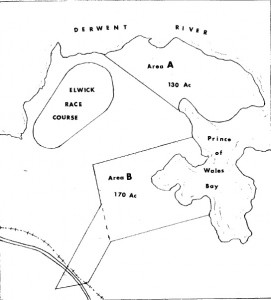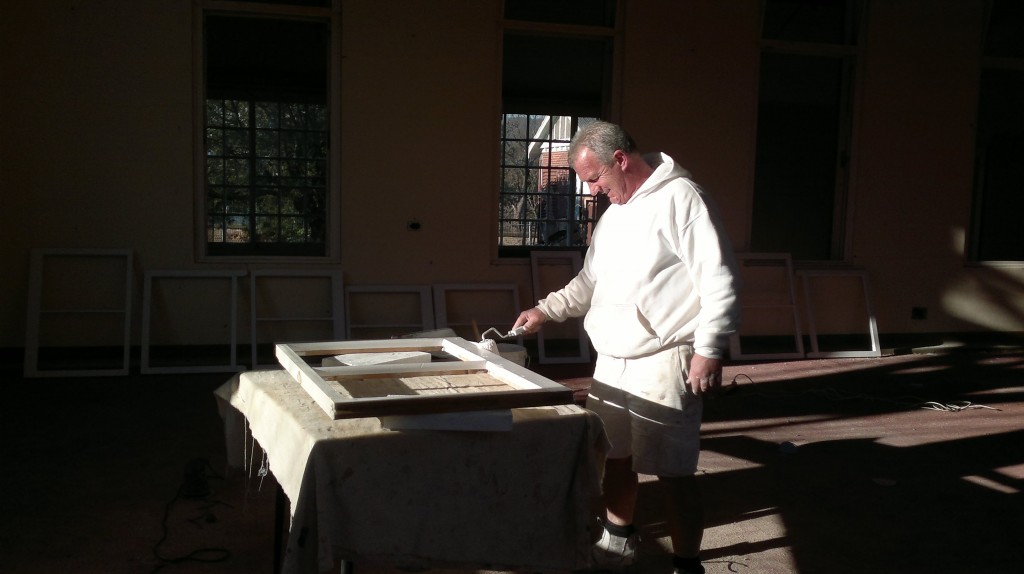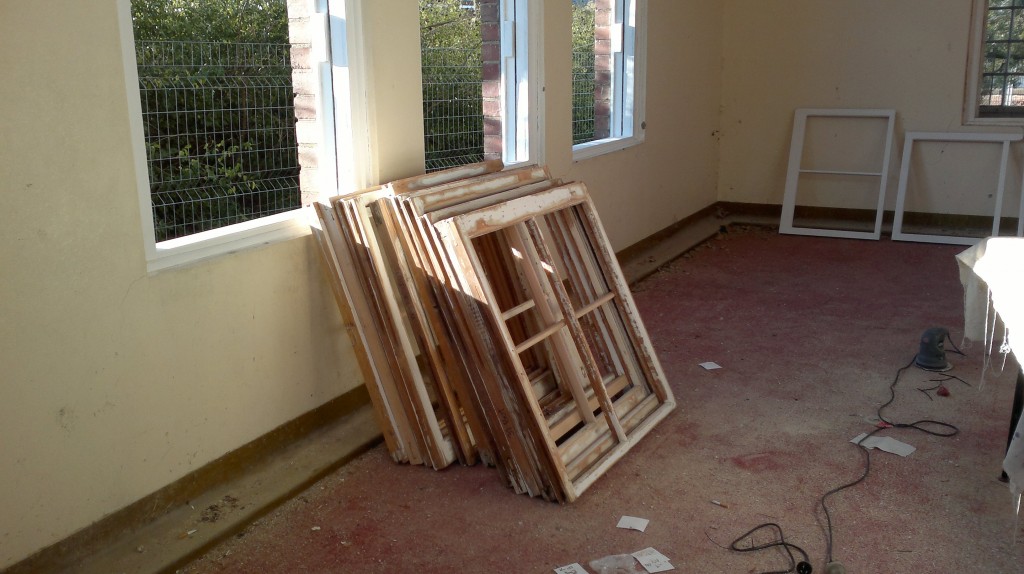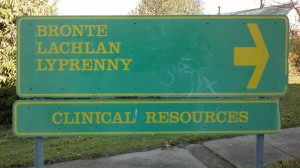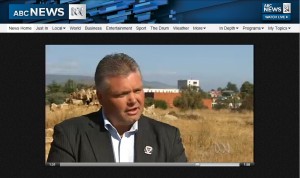The Site and Buildings of New Norfolk
The Proposed Glenorchy Site
Dr Macfarlane, the current Superintendent of New Norfolk, thought that overall the New Norfolk site was best and would not recommended its movement closer to
Hobart as this would allow greater public intrusion and disturbance of the patients. A view supported by Dr. Coutie, the Assistant Medical Officer, who
believed the site was healthy, with a good view, abundant water, and the grounds could be expanded. While Rev. W. Murray who gave services at New
Norfolk, thought that patients were more excited after the visits of friends and relatives so some distance from the main town was advisable if it would
decrease visits. Dr. Huston, the former Superintendent, echoed this view indicating the site was the best and a new asylum was not required. If placed
near Hobart he believed the patients would be less able to go outside the walls due to a natural dread of the insane by people. Miss Laland, the Matron,
offered a different view believing the asylum should be near Hobart. More entertainments would be accessible, there would be more intercourse with
friends, and patients could go out to church and on outings.
The New Norfolk Hospital for the Insane. Susan Piddock
What’s in a name?
 “In 1937 the name of the asylum changed to Lachlan Park Hospital. This was the first time that reference to an asylum, insanity or mental disease was removed from the name of the institution. It had previously been known as the Lunatic Asylum, New Norfolk (1829), the Hospital for the Insane, New Norfolk (1855), and the Mental Diseases Hospital (1915). The dropping of references to mental diseases and insanity with the name changes to Lachlan Park Hospital reflect an attempt to distance the institution from the social stigma attached to these terms.”
“In 1937 the name of the asylum changed to Lachlan Park Hospital. This was the first time that reference to an asylum, insanity or mental disease was removed from the name of the institution. It had previously been known as the Lunatic Asylum, New Norfolk (1829), the Hospital for the Insane, New Norfolk (1855), and the Mental Diseases Hospital (1915). The dropping of references to mental diseases and insanity with the name changes to Lachlan Park Hospital reflect an attempt to distance the institution from the social stigma attached to these terms.”
The New Norfolk Hospital for the Insane. Susan Piddock
Bronte Ward under repair.
Power to the Avenue
Aurora’s activities today in the Avenue are working towards Willow Court having a good supply of electric power along with others in the Avenue, by the photos this is very close to finishing. The last photo shows a new power pole with a transformer in front of Bronte Ward ready and waiting to be connected. Connection will allow better security for the Historic Precinct of The Barracks, C & A Wards and Bronte Ward. Local businesses on the east side of George Street went without power for most of the day to cater for this connection, costing over $75,000.
[nggallery id=14]
Catherine
The many roles of the Royal Derwent Hospital in the early seventies
• Acute admission unit (includes the most violent patients from the whole state)
• Convalescent unit (all patients requiring more than six weeks in-patient care)
• Chronic psychotic rehabilitation unit
• Disturbed epileptic holding unit
• Elderly psychotic holding unit
• Psycho-geriatric acute admission unit
• Psycho-geriatric chronic disturbed holding unit
• Housing for senile dements (not requiring hospital care who have nowhere else to go)
• Chronic sick not mentally ill but ‘difficult’
• Mental retardation assessment unit
• Mental retardation children in-patients unit
• Totally dependent unit
• Mental retardation education & training young patients
• Mental retardation holding unit older patients
• Mental retardation rehabilitation unit
• Disturbed mentally retarded holding unit
• Youthful offenders male
• Youthful behaviour disorders in males (not yet offenders)
• Youthful behaviour disorder female (not offenders – not under propel’ control)
• Youthful offender’s female (minor offences)
• Older psychopaths
• Older subnormal offenders
• Psychotic offenders (serious offences)
• Psychotic offenders (minor offences)
• Socially incapable
• Chronic neurotics
• Social nuisances
• Alcoholics
Memories, stories of Tasmania’s Last Mental Asylum 1960-2001 (Draft) NDS
ABC 7.30 Report 1991
httpvh://www.youtube.com/watch?v=I-BEduVI_2I&feature=youtu.be
This is the first release of this story since 1991, this footage has been publicly screened and all people had given permission to be filmed and broadcast.
In 1991 ABC News recorded a story about a number of ex-residents of Willow Court. It was screened on the 7.30 Report as a 9 minute story of “institutionalisation to community” and followed the stories of Neil, Don, Jean and Ian. It is believed that Jean and Ian were the first couple to be married in Willow Court despite negative pressure to their marriage. They also interview the Hon. Judy Jackson MHA who was key in the decision to de-institutianlisl 300 residents with disabilities despite huge pressure from within her own political party. Where did they go? Staff and residents talk about their new life and how they felt about institutionalised care.
Paranormal Documentary Privacy Issues
“The Anti Discrimination Commissioner, Robin Banks was interviewed on ABC radio news
on Saturday regarding her concerns with the use of archival footage of
Residents of Royal Derwent Hospital being made public. While Commissioner Banks
acknowledged there was no evidence of discrimination in the documentary, the
use of the archival footage depicting young adults could breach the Personal
Information Protection principles. The Commissioner has referred the matter to
the Privacy Ombudsman who is in communication with the Councils lawyer on the
matter.”
“The Commissioners finding is the expected outcome of research and lobbying by
concerned community members who respect the privacy of individuals who lived at
Willow Court and their family members.”
This was a quote from an email sent to this website today. There are a number of concerned people and groups out there fighting for the rights of People who didn’t have a choice in appearing in this film.
The Lord Mayor Martyn Evans was quoted in the Derwent Valley Gazette (May 1st) as saying that “the Council had viewed the documentary three times and it had also been seen by State Archivist Ross Latham and Anti-Discrimination Commissioner Robin Banks. We can’t be accused of rushing anything through- this has all gone through the appropriate channels and processes”
While we agree that the processes should be followed we also have to acknowledge that these processes were not instigated by the Derwent Valley Council, instead they were raised by concerned Individuals, Parents and Advocates of the previous Residents. Council had approved this film without any of the due process including the Privacy Commissioner.
PS added 30/05/13
I spoke to a CEO of a disability service provider today who had been approached by the mother of an ex-patient of RDH and is concerned that her son will be in this film. At 84 years of age she shouldn’t have to go through this suffering for the benefit of some young person’s hobby. Why is this film maker so bent on presenting people with disabilities in such an unpleasant and insensitive way?
Tasmanian Heritage Council Approved New Shopping Centre next to Willow Court
Council approved a Supermarket Development on the old oval precinct area and the Tasmanian Heritage Council also approved the plans at its February meeting, subject to several conditions including a stipulation that the building must be a natural stone or brickwork colour similar to the lime-wash finishes found on the earliest buildings at Willow Court. New Norfolk News Article
This will help the new complex be in sympathy with it’s heritage neighbours it is believed. This is something that planners will only have one chance at getting right and we are hopeful that this has had enough thought.

